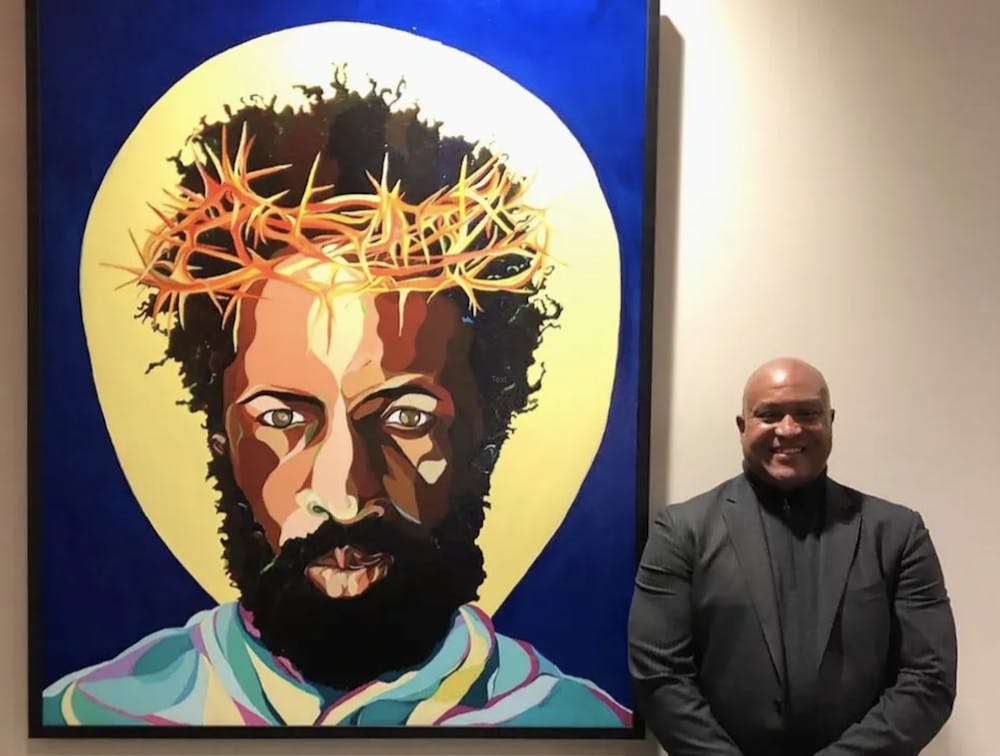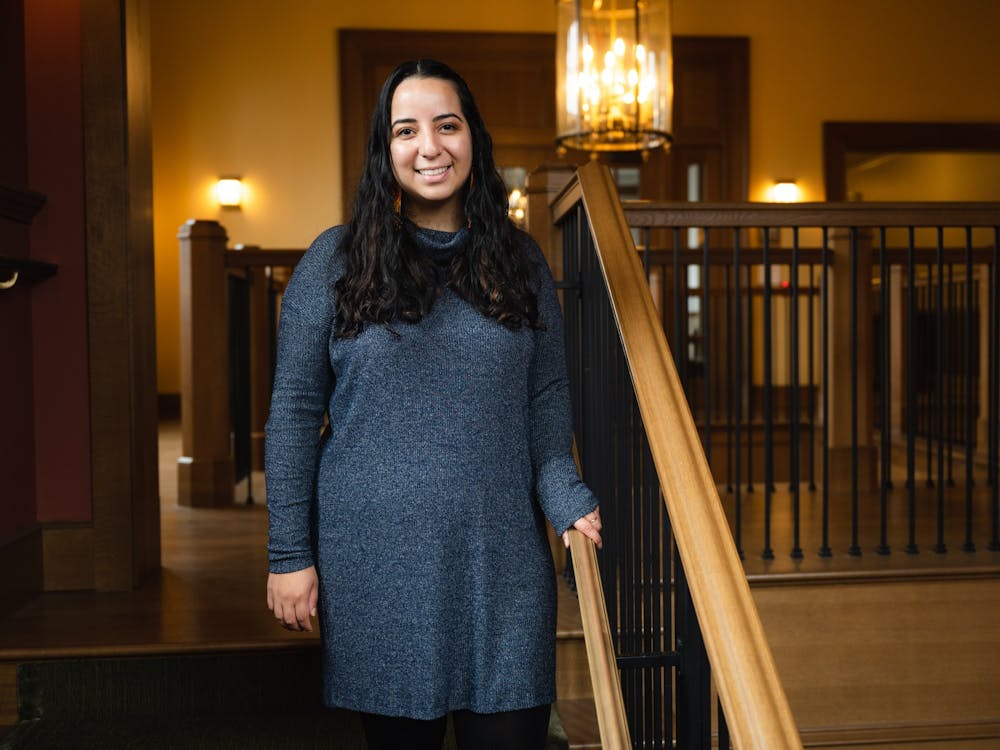Gerald Roulette, the artist behind the acrylic painting of Jesus in the Clark Library, “The Great I Am,” spoke about his background and the artistic process that led to the piece on Wednesday, Oct. 6 at UP.
Originally from Kansas City, Missouri, Roulette grew up in a household of musicians. But after trying his hand at the French horn, Roulette realized that his artistic talent wasn’t musical.
“I always knew I had a talent for art and I just wanted to see if I could have the same talent that my parents and my brothers and sisters had,” Roulette said.
Roulette described growing up in a racially diverse environment, and said that being around peers of all backgrounds at school helped him accept everyone in his community as one large diverse group.

"The Great I Am" hangs on the wall of the Clark Library. The acrylic painting was created by Gerald Roulette.
According to Roulette, his first encounter with an image of Christ occurred at a young age, when he saw pictures of Jesus with various skin tones at his grandparents' house or church. He quickly grew attached to the idea of Jesus’ love for individuals of all races and backgrounds.
In 1968, Martin Luther King Jr. was assassinated while Roulette was in junior high. Roulette and his fellow classmates partook in the demonstrations in Kansas City following King’s death.
During the protest, Roulette and the crowd were stopped by police as they got close to city hall. When chaos broke out, a priest from a church nearby offered Roulette and his classmates safety inside.
“We ran into the Catholic church [and] [the priest] put us down in the basement,” Roulette said. “The police see that. They don’t go into the church. They teargas the church. They shoot right through the windows in the basement. So now we’re down in the basement being teargassed.”
This struggle, anger, and frustration that Roulette underwent through his firsthand experiences of injustice were translated to much of his artwork in high school.
While attending college at Truman State University, one of Roulette’s fine arts professors and his future mentor, William Unger, took note of Roulette’s tendency to stick to Black characters and settings.
Unger told Roulette that although his art demonstrated technical skill, he could still reach his full potential by painting all people, encapsulating multiple perspectives. This piece of advice stuck with Roulette in his future paintings.
Roulette began researching depictions of Jesus, especially taking note of Daniel 10:6 because of its unique description of Christ. Through this passage, Roulette demonstrated the characteristic “layers” of Jesus that guide his work.
“I see the world in layers,” Roulette said. “Jesus was a man of many layers. He was not a one-dimensional man. Neither am I.”
Color is a key component in Roulette’s artwork, as shown by the vibrant robe Jesus is wearing in the Clark Library painting. He intentionally painted Jesus’ robe in color as opposed to white.
He also chose to paint Jesus as a person of color given the various dimensions and perspectives of Jesus.
“Why would God make all these things of color if he didn’t want them?” Roulette said. “He didn’t make everything black and white. It’s color all around us and there’s energy in that. That’s where I get my energy from.”
Roulette’s intentional choice of direct eye contact with the image of Jesus also develops greater meaning in the painting itself.
“This depiction is that you need to know when (Jesus) is looking at you, he is saying ‘hey, I died for you because I love you. Anything you’re going through, I’ve got your back’,” Roulette said. “If you look at those eyes, he’s looking at you, letting you know, ‘I have your back’.”
Michael Lang is a reporter for The Beacon. He can be reached at langm24@up.edu.








